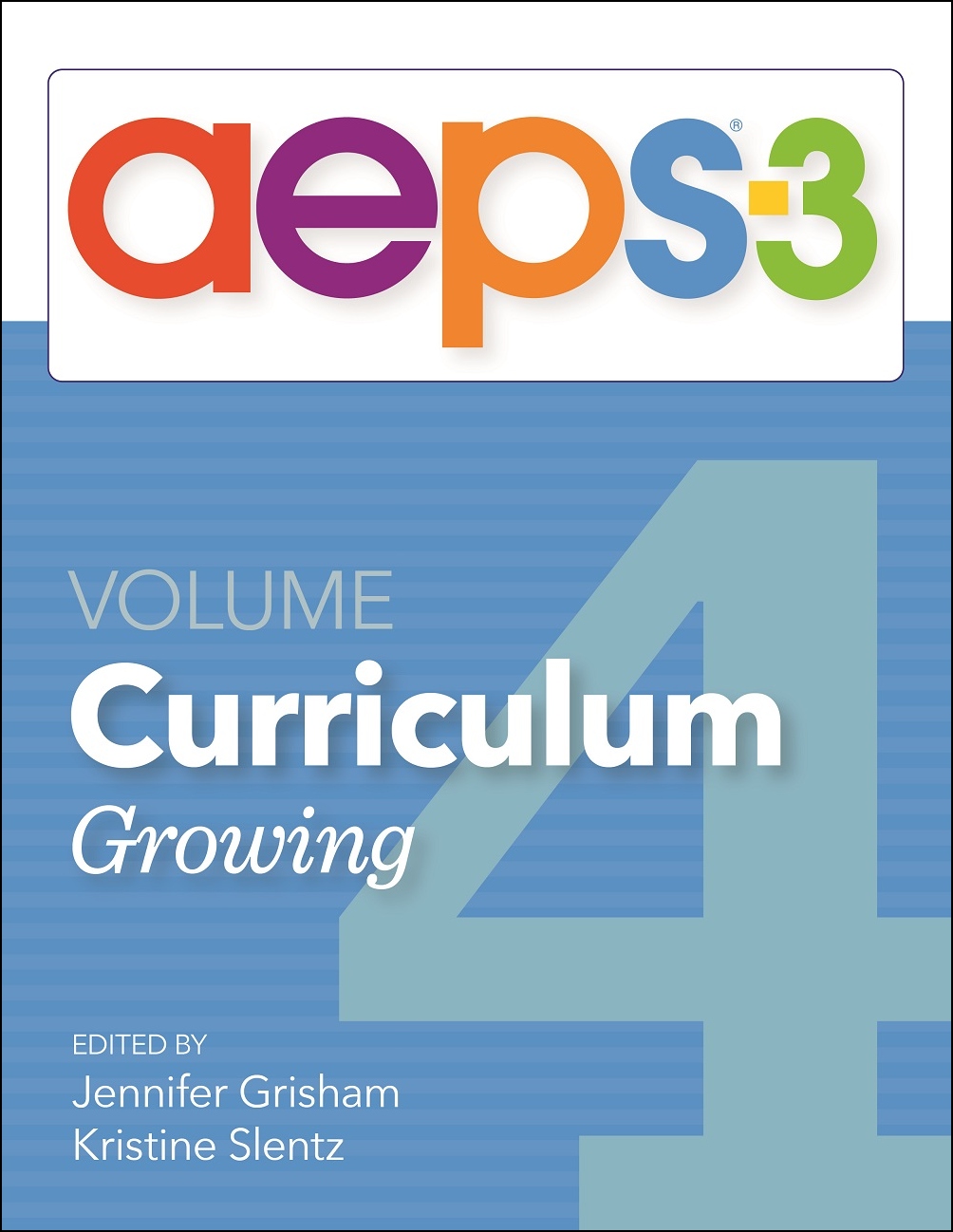Your Guide to the AEPS-3 Curriculum Levels
PublishedExplicitly linked with the AEPS®-3 Test, the tiered, activity-based AEPS-3 Curriculum helps your program turn the data from the test into actionable goals. In the new edition of AEPS, the Curriculum is organized into three separate volumes by developmental age or skill range: Beginning, Growing, and Ready. In today’s post, we’ll take a look at the three curriculum levels, how the volumes are different, and what you’ll find in each one.
Beginning Level (Volume 3)
The Beginning level curriculum includes developmental skills typically expected for infants and young children from birth to 18 months. This volume contains the earliest skills in each of the eight AEPS-3 areas, with a strong emphasis on early motor, social-communication, and interaction skills. Skills at the Beginning level are primarily foundational skills that are components of later, more complex skills. Here are some examples:
- Rolls from stomach to back
- Uses finger to touch or point
- Uses consistent approximations for words or signs
- Responds appropriately to soothing by adults
- Imitates familiar vocalizations
The Beginning volume is a curriculum resource for practitioners working with infants and toddlers or older children who have significant disabilities. It’s an ideal resource for professionals such as Early Head Start home educators and early intervention home visitors, who will find valuable strategies for teaching infants and toddlers with and without disabilities in the context of family routines and activities. This level is also recommended to meet the needs of early childhood special educators who serve chronologically older children who are eligible for services under Part B, Section 619, in blended, inclusive, and self-contained classrooms. The Beginning volume is effective for teaching a range of specific, developmentally early goals to very young children being served in a range of early childhood environments, such as child care.
 Growing Level (Volume 4)
Growing Level (Volume 4)
The Growing level curriculum includes skills expected for typically developing older toddlers and young children, as well as older children with significant disabilities who are functioning at a developmental level from 18 months to 3 years. This volume includes the expanding, middle-range skills in each of the eight AEPS-3 areas and emphasizes social-emotional, early cognitive, adaptive, social-communication, and early literacy skills. Skills at the Growing level are basic, building on the earlier foundational and prerequisite skills targeted in the Beginning volume. Following are some examples:
- Jumps up and down in place
- Scribbles
- Uses 50 single words, signs, or symbols
- Meets behavioral expectations in familiar environments
- Indicates need to use toilet
- Identifies common concepts
The Growing volume is a curriculum resource for practitioners who work with older toddlers in home and classroom settings. Early Head Start home educators and Part C Early Intervention home visitors will find valuable strategies for teaching functional basic skills to young children with and without disabilities in the context of play and family routines and activities. The AEPS-3 Curriculum has been specifically designed to meet the needs of preschool special educators who serve diverse groups of developmentally younger eligible children under Part B, Section 619, in blended, inclusive, and self-contained classrooms. This Growing volume is effective for teaching a range of specific, developmentally early goals and for improving the quality of routines and activities in any early childhood environment.
 Ready Level (Volume 5)
Ready Level (Volume 5)
The Ready level curriculum includes skills expected for typically developing preschoolers or children who are functioning in the 3- to 6-year developmental age range. Skills at the Ready level are the most difficult in each of the eight AEPS-3 areas and emphasize cognitive, social-communication, math, and literacy skills necessary for success in school. These skills tend to be complex combinations of basic skills contained in Volume 4. Following are some examples:
- Rides and steers tricycle
- Uses conversational rules
- Responds appropriately to warnings
- Counts forward to 10
- Names 12 frequently occurring letters
The Ready volume is a curriculum resource for preschool and kindergarten teachers who serve developmentally diverse groups of young children. AEPS-3 Curriculum strategies are especially useful for blended or inclusive classrooms that serve children with and without identified disabilities. The curriculum framework is effective for teaching a range of specific preschool goals and is designed to prepare children for kindergarten programs that follow developmentally appropriate practices. Because the curriculum strategies are equally appropriate for home and classroom use, the same skills can be addressed in the context of play, routines, and activities both at home and at school, promoting home–school coordination.
WATCH A WEBINAR: Learn more how the activity-based, multitiered AEPS-3 Curriculum can help you support every child’s development in this recorded webinar from co-developer Jennifer Grisham and early childhood educator Christy Kaylor. View the webinar now!
LEARN MORE: Get more information about the AEPS-3 Curriculum and see a sample activity. Explore the curriculum!
This post was adapted from Grisham, J., & Slentz, K. (Eds.). (2022). AEPS®-3 Volume 5: Curriculum—Ready. In D. Bricker, C. Dionne, J. Grisham, J. J. Johnson, M. Macy, K. Slentz, & M. Waddell, Assessment, Evaluation, and Programming System for Infants and Children, Third Edition (AEPS®-3). Brookes Publishing Co.




